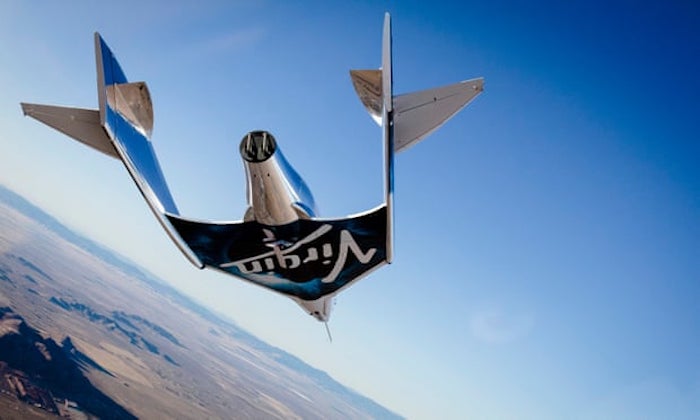I’ve been writing about Virgin Galactic on a semi-regular basis for more than ten years, posting my first story on this blog back in July of 2008. Since then, the company has seen its share of highs and lows, with spectacular displays of technology intermixed with tragedy and disaster. But today, all of the years of hard work, preparation, and patience have paid off with the first successful flight of an American spacecraft beyond the atmosphere since the space shuttle program ended in 2011.
This morning, the Virgin Galactic SpaceShipTwo conducted another test flight above the California desert, with the aircraft dropping from below its delivery vehicle dubbed the White Knight. One separated, the ship’s rocket engines kicked in and propelled it to the very edge of space before it successfully navigated back to Earth for a safe landing. It was the first flight of the SpaceShipTwo since a deadly crash sent engineers back to the drawing board four years ago.
This successful flight promises to open a new era of commercial space travel, with a number of high profile celebrities and businessmen already lining up for a chance to fly aboard Virgin’s new venture. A 90-minute suborbital flight reportedly costs $250,000, with passengers aboard the SpaceShipTwo going as high as 50 miles above the Earth, which is enough to see the curvature of the planet and experience weightlessness.
Virgin’s founder is none other than billionaire Richard Branson, who has a history of taking on all kinds of adventures. He is scheduled to be aboard the ship’s commercial flight, which he promises will come within months, not years. If so, he’ll beat billionaire rivals Jeff Bezos of Amazon and Blue Origin fame, as well as Space X’s Elon Musk to the punch. Admittedly, both of those programs are planning more ambitious commercial space projects, but they also appear to be years away from getting off the ground.
Today’s flight of the SpaceShipTwo is nothing short of a trump for Virgin. They can now put the tragedy of the crash from four years ago behind them and begin looking to the future. If all goes as planned, 2019 could be the year that commercial space flights finally become a reality. I for one am ready to go.
- Gear Review: The Xero Scrambler Mid is an Ultralight Hiking Shoe for Spring - March 1, 2023
- Gear Review: Yeti Roadie 48 Wheeled Cooler - August 18, 2022
- Kristin Harila Continues Pursuit of 8000-Meter Speed Record - August 16, 2022
